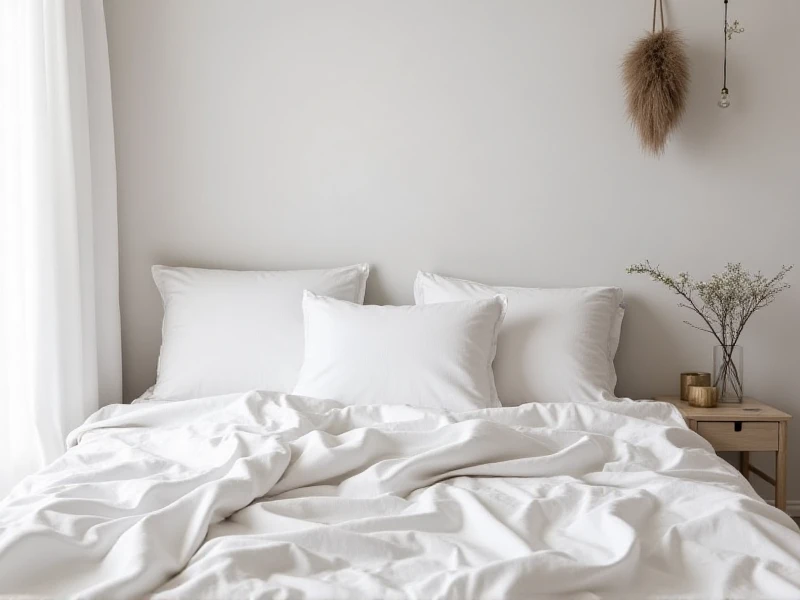Ultimate Guide to Choosing the Best Bed Sheets for Unbeatable Comfort
2025-06-08

Ah, bed sheets. More than just fabric, they're the critical barrier between you and a perfect night's sleep – or a restless one. The wrong sheets can leave you tossing, turning, and overheated. The right ones? Pure bliss. Choosing the best bed sheets isn't just about aesthetics; it's an investment in your nightly comfort. So, how do you navigate the overwhelming options? Let's break down what truly matters.
1. Material Matters Most: Feeling the Fabric
This is the single biggest factor impacting comfort, breathability, and durability.
Cotton: The undisputed champion for many. It's supremely breathable, soft, and durable. Look for specific types:
Egyptian Cotton: Prized for its extra-long staple fibers, leading to incredible softness and strength. Top-tier quality.
Pima/Supima Cotton: Another long-staple cotton (often US-grown), known for similar softness and durability as Egyptian, sometimes more accessible.
Upland Cotton: The most common. Quality varies significantly with thread count and weaving, but often offers great value. Organic Cotton is a fantastic choice if avoiding chemicals is a priority.
Linen: Naturally temperature-regulating – exceptionally cool in summer and surprisingly warm in winter. Gets softer with every wash but has a distinctive, elegant textured look and feel (some find it initially crisp). Wrinkles easily (embrace the lived-in charm!).
Bamboo (Viscose/Rayon): Made from bamboo pulp. Feels luxuriously silky and smooth, excellent moisture-wicking, and has natural antibacterial properties. Very breathable. Ensure it's from sustainable sources, as processing can vary.
Microfiber/Polyester: Budget-friendly, wrinkle-resistant, and durable. However, they tend to trap heat and lack the breathability of natural fibers, making them feel less comfortable year-round to many sleepers.
Silk: The ultimate indulgence—hypoallergenic, temperature-regulating, kind to skin and hair. Requires delicate care and carries a premium price tag.
Blends (e.g., Polycotton): Aim for the best of both worlds (e.g., cotton's breathability with polyester's wrinkle resistance). Look for cotton-dominant blends (55% cotton or higher) for better comfort and breathability over time.
2. Thread Count: The Goldilocks Zone
Thread count (TC) – threads per square inch – has been overly hyped. Higher isn't automatically better. The quality of the fibers and the weave are far more crucial.
200-400: Often ideal for percale weaves (crisp, matte finish). Provides good breathability and durability without feeling heavy. Don't dismiss mid-range TC!
400-600: Common range for sateen weaves (smoother, silkier feel with a slight sheen). Can feel denser and warmer.
600 : While marketed as "luxury," extremely high counts can sometimes feel stiflingly heavy or use lower-quality fibers spun thinly. Focus first on fiber quality before chasing astronomical TC.
3. Weave Dictates Feel: Percale vs. Sateen
The weave changes the texture and temperature:
Percale: Crisp, cool, and matte – like a perfectly ironed shirt. Lightweight and exceptionally breathable. Classic and adored by hot sleepers year-round.
Sateen: Smooth, lustrous surface with a subtle sheen. Feels warmer and drapes beautifully. Offers a more luxurious "hotel bed" feel but might be slightly less breathable than percale.
Flannel (for Winter): Brushed for incredible softness and warmth. Made primarily of cotton or cotton blends.
Jersey Knit: Stretchy cotton knit, feels like a soft t-shirt. Casual, comfortable, but tends to pill over time.
4. Getting the Fit Right: Size & Depth
Nothing undermines comfort like ill-fitting sheets.
Know Your Mattress Size: Twin, Twin XL, Full, Queen, King, California King. Buying too small is a recipe for annoyance. Pay extra attention to specialized sizes like Twin XL (longer) or California King (narrower but longer than standard King).
Fit the Depth (Pocket Size): Modern mattresses are thicker! Standard sheets might fit 7-14 inches. Measure your mattress depth (including any topper!). Opt for:
Deep Pocket Sheets: Designed for mattresses 15 inches or more.
Extra Deep Pocket: Ideal for thick pillow tops or multiple mattress layers exceeding 17 inches.
Adequate depth ensures sheets stay securely tucked, preventing constant adjustment. Look for strong corner elastic.
5. Care & Longevity: Keeping Them Beautiful
Love your sheets? Show it with proper care.
Check the Label: Always first! Materials have different needs.
Gentler Washing: Wash in cool or warm (not hot!) water to preserve fibers and colors. Avoid harsh detergents. Gentle cycles are best.
Skip the Over-Drying: Tumble dry on low heat to prevent excessive shrinkage and damage. Removing sheets slightly damp helps reduce wrinkles. Line drying protects fibers best if feasible.
Rotate Sets: Have multiple sets and rotate them. This significantly reduces wear and tear on any single set, making each last much longer. Wash sheets weekly for optimal hygiene.
Finding Your Perfect Bed Sheets
The "best" sheets are ultimately the ones that work for you. Match the material, weave, and TC to your personal preferences:
Hot Sleepers? Prioritize breathability: Percale cotton, linen, or bamboo.
Cold Sleepers? Sateen, flannel, or higher TC cotton might feel cozier.
Skin Sensitivities? Look for natural fibers like organic cotton, bamboo, or linen.
Seek Luxury? Explore high-quality long-staple cotton (Egyptian, Pima) or genuine silk.
Value & Durability: Quality cotton percale or sateen offers excellent longevity.
Investing time in choosing the right bed sheets pays back tenfold every single night. Prioritize material quality and weave over superficial claims, ensure the perfect fit, provide gentle care, and you'll transform your bed into a consistently comfortable, inviting haven. Sweet dreams guaranteed.
Category: